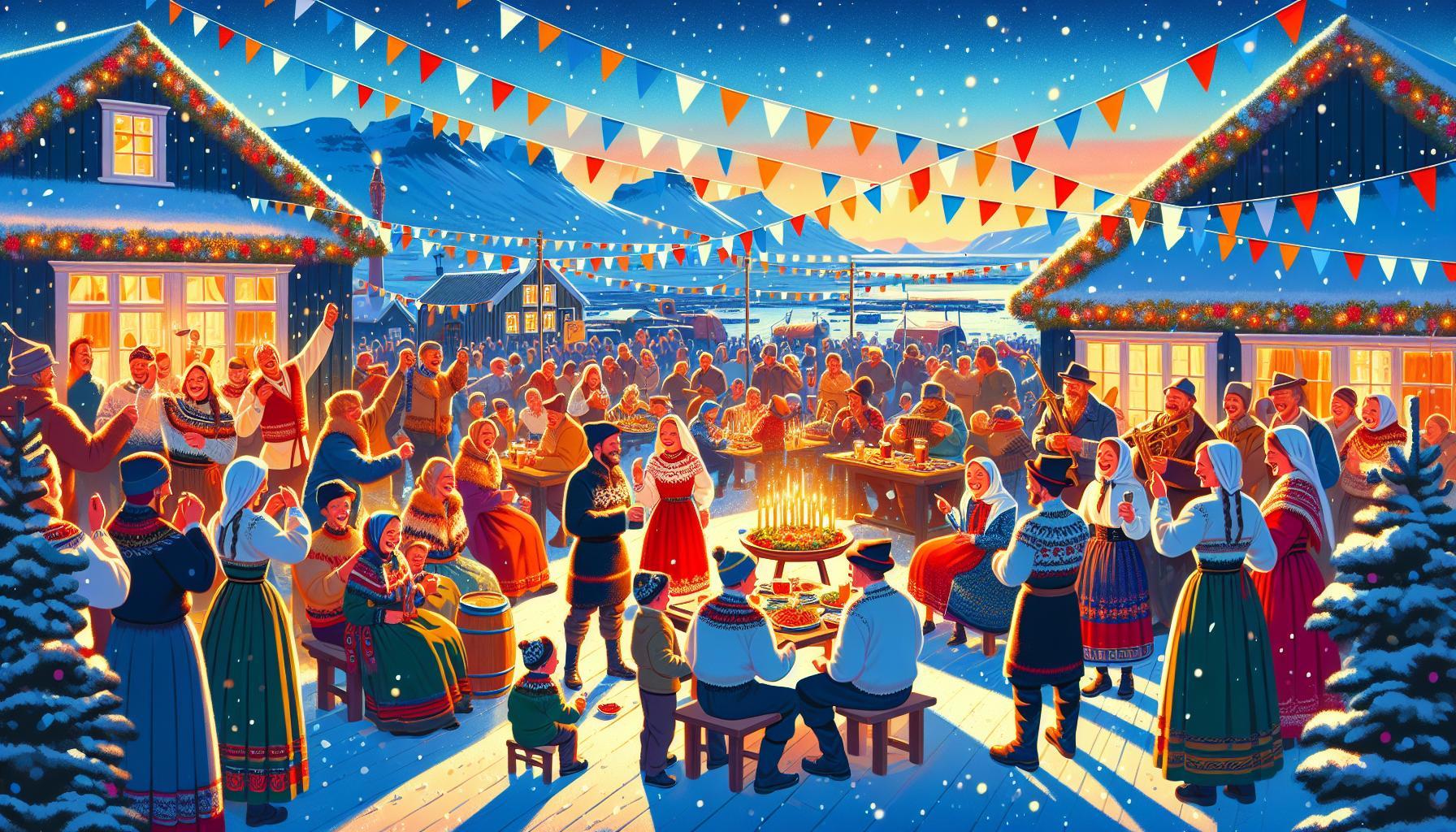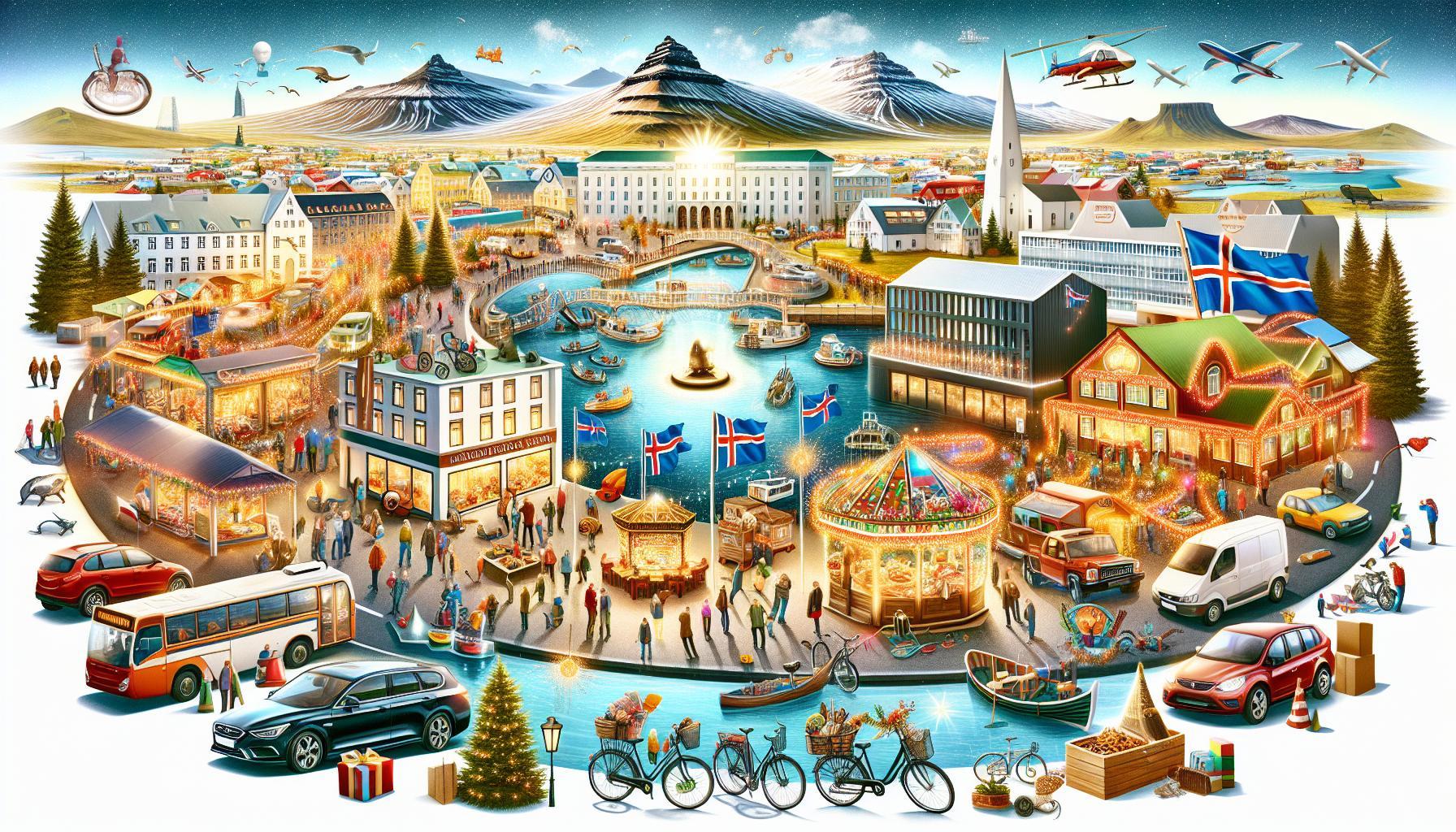Can you imagine a land with vast volcanic landscapes yet few trees? Iceland’s unique environment raises the question of whether reforestation efforts can reshape its scenery. This exploration of Iceland’s vegetation reveals not only the challenges faced by nature but also the pressing importance of restoring its forests for ecological balance and climate resilience.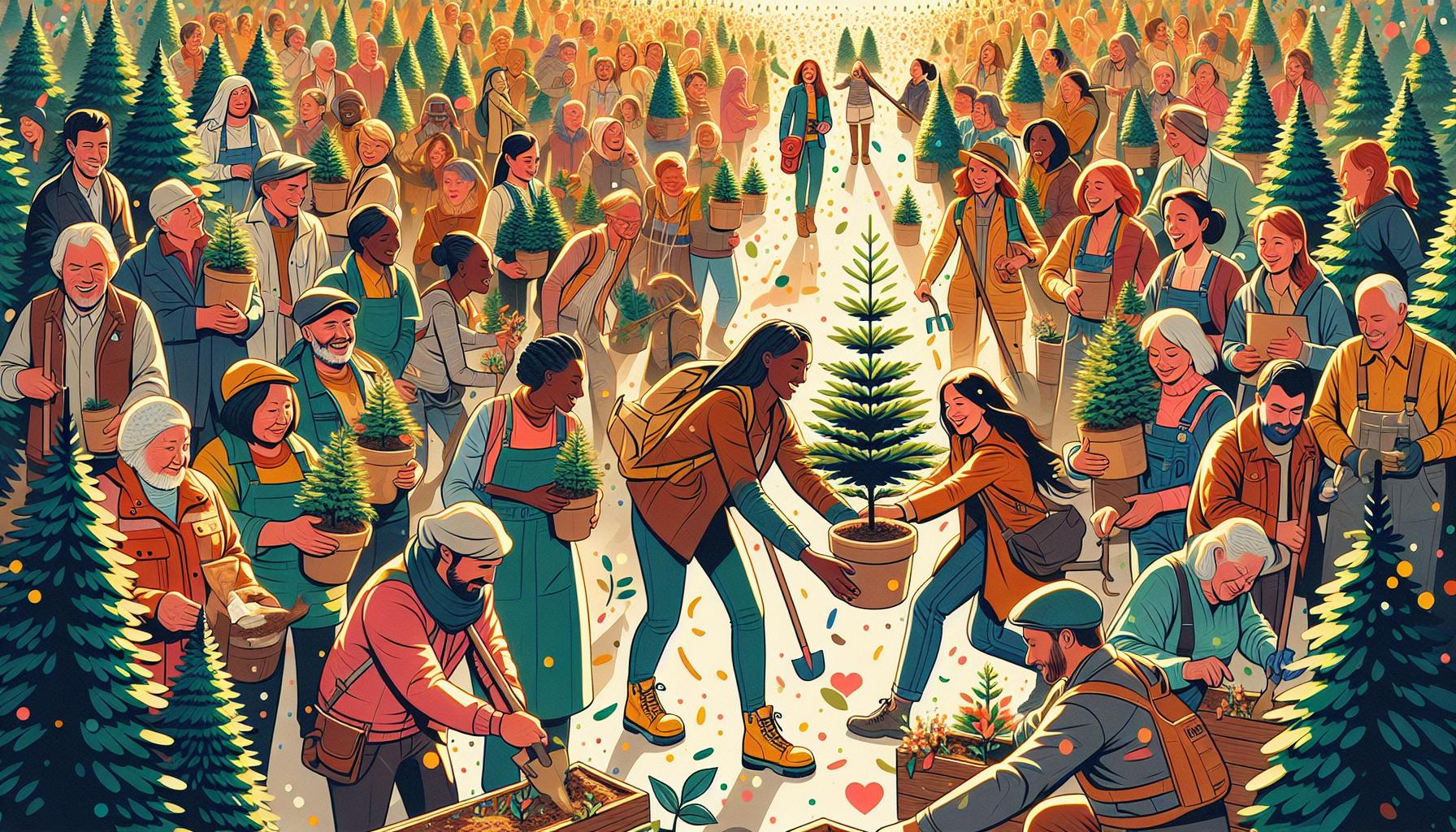
Discovering Iceland’s Unique Landscape: The Role of Trees
In the heart of the North Atlantic lies Iceland, a land often characterized by its dramatic volcanic landscapes and vast expanses of tundra. However, buried within this rugged exterior is a fascinating story of resilience and renewal, particularly when it comes to the role of trees in shaping Iceland’s environment. The presence of trees in Iceland is not just a myth; it reflects a growing movement toward reforestation that seeks to restore ecological balance and combat the effects of climate change.
Historically, Iceland was once blanketed in forests, which significantly aided in soil preservation and biodiversity. Unfortunately, over centuries of deforestation, primarily for agriculture and fuel, these woodlands dramatically declined. Today, a concerted effort is underway to reclaim the landscape by enhancing the tree population. With organizations such as the Icelandic Forest Service leading the way, trees are being planted in designated areas across the country, demonstrating a commitment to ecological restoration.
Key Species and Their Benefits
Several tree species have been prioritized for reforestation efforts, each contributing uniquely to Iceland’s ecosystem:
- Birch: Native to the region, birch trees are hardy and well-suited to the harsh climate. They improve soil quality and provide habitats for wildlife.
- Spruce: Planting Norway spruce and Sitka spruce has become popular due to their fast-growing nature and ability to thrive in diverse conditions.
- Willow: This species is crucial for stabilizing soil and preventing erosion, particularly alongside riverbanks.
Reforestation not only contributes to biodiversity but also plays a significant role in carbon sequestration, helping to mitigate climate change. It’s estimated that each day, trees absorb an impressive amount of CO2, enhancing air quality and creating a healthier environment for both flora and fauna.
Examples of Reforestation Projects
Many areas in Iceland are witnessing active reforestation initiatives. Some notable projects include:
| Project Name | Location | Description |
|---|---|---|
| Forest of Viðey | Reykjavik | A unique urban forest that hosts a variety of tree species and serves as a vital recreational area. |
| Vigdisar Forest | Southwest Iceland | Part of a large reforestation effort aimed at restoring native woodlands and enhancing biodiversity. |
| Skaftafell National Park | South Iceland | Invests in improving forest cover while promoting tourism and educational opportunities. |
Public awareness and participation are crucial for the success of these initiatives. Visitors to Iceland are encouraged to engage in tree planting activities or support local conservation efforts. By understanding the vital role trees play in restoring Iceland’s unique landscape, we can all contribute to a greener, more sustainable future.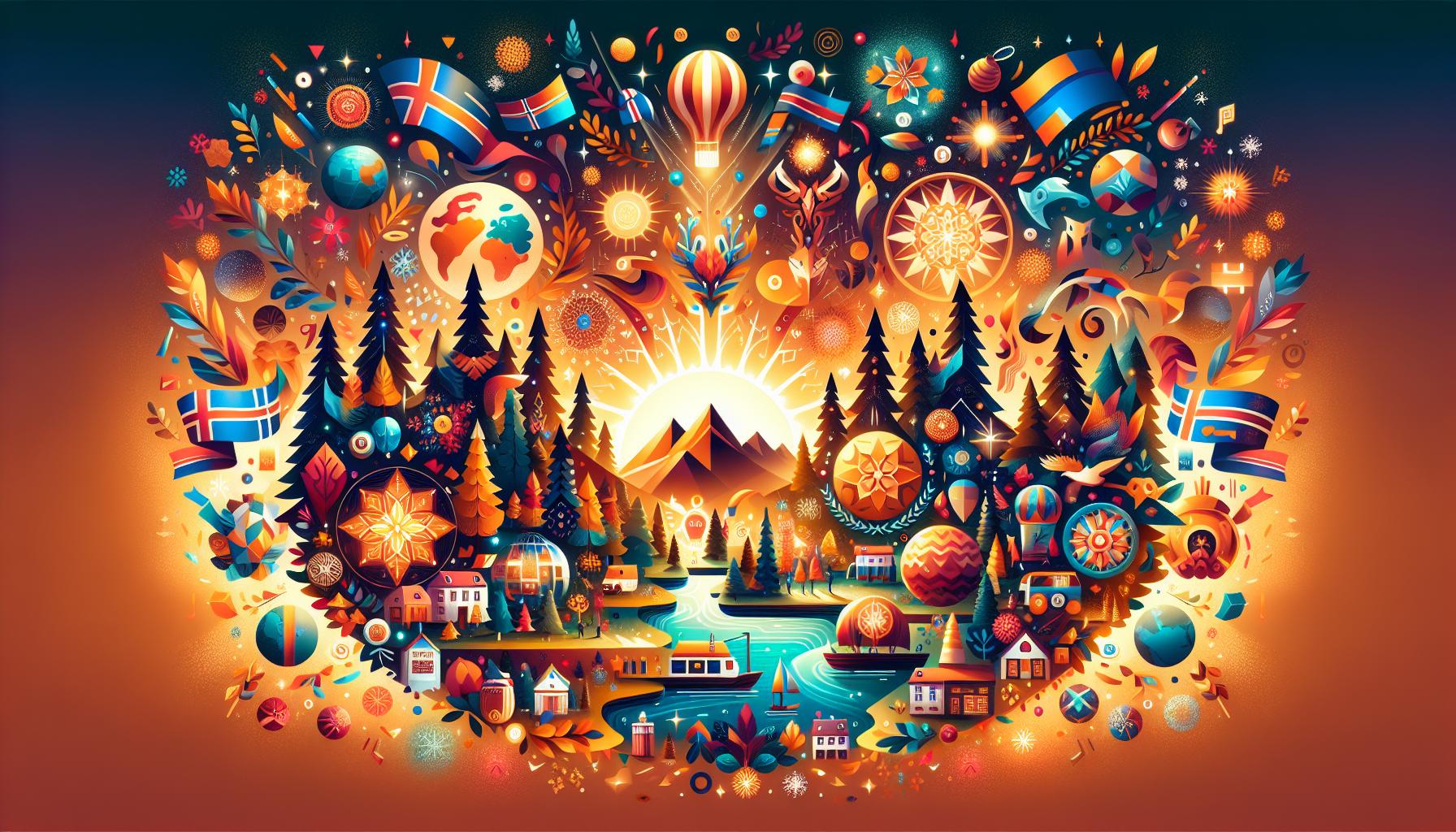
A Journey Through Iceland’s Reforestation Efforts: Past, Present, and Future
The story of trees in Iceland is one of resilience and transformation. Once referred to as “the land of fire and ice,” Iceland was vastly deforested due to volcanic eruptions, grazing livestock, and harsh climates. Today, thanks to concerted reforestation efforts, it is on a path to not only reclaim its green heritage but also actively combat climate change. This unique journey highlights both the challenges faced and the progressive measures being taken to restore the natural landscape of the island.
The Past: A Stripped Landscape
Historically, Iceland was once covered with lush forests, primarily composed of birch and willow trees. With the settlement of Vikings around the 9th century, extensive logging began to take place, leading to significant soil erosion and degradation. By the early 20th century, forests had virtually vanished, leaving behind only scattered pockets of scrubland. This period of deforestation resulted in barren landscapes, which can still be observed today in various regions across the country.
The Present: Restoration Initiatives
In recent decades, environmental organizations and the Icelandic government have launched significant reforestation initiatives aimed at restoring the island’s natural beauty. Projects like the Icelandic Forest Service‘s afforestation program have focused on planting indigenous species as well as other hardy tree varieties suitable for the harsh Icelandic climate.
- Birch: Birch trees are one of the few native species that have been prioritized in reforestation efforts. Their adaptability and resilience make them ideal for the rocky soils.
- Spruce: Non-native species such as Sitka spruce have also been introduced to increase forest cover and biodiversity.
- Community Involvement: Many local communities participate in planting trees, fostering a renewed connection with the land and nature.
These initiatives show promising results, with over 50 million trees planted in the past century, returning greenery to areas that have long been devoid of life. The initiatives not only focus on planting new trees but also on educating the public about the importance of sustainable forest management.
The Future: A Green Vision
Looking ahead, Iceland’s reforestation strategy is expanding, driven by science and community engagement. Goals include increasing forest cover to 12% by 2100 and implementing more robust programs to protect existing forests from external threats. Key actions being planned include:
- Developing nurseries to supply locals with native saplings for planting.
- Improving policies to manage grazing and land use, ensuring the sustainability of forest growth.
- Creating eco-tourism opportunities that showcase the beauty of rejuvenated landscapes.
In addition to these projects, ongoing research into the benefits of afforestation, such as carbon sequestration, highlights a critical connection between tree growth and climate change mitigation. As Icelanders rally to reclaim their land, the reforestation campaign stands as a testament to human determination and a hopeful glimpse of returning forests blanketing the rugged terrain of this extraordinary island.
Embracing the ongoing efforts in the realm of reforestation can inspire individuals worldwide to consider their own local ecosystems, emphasizing that every small step can lead to significant environmental restoration and preservation.
The Hidden Forests of Iceland: Where to Find Nature’s Green Gems
Nestled amongst the stark landscapes of lava fields and geysers, the hidden forests of Iceland emerge as enchanting pockets of greenery. A surprising revelation for many, these verdant havens are crucial not only for their beauty but also for their role in the ongoing efforts of reforestation and ecological balance. Beyond the vast expanses of barren land, Iceland is home to several unique forests where native trees and carefully introduced species thrive, showcasing nature’s resilience and the importance of preservation.
Key Locations to Discover Iceland’s Forests
If you’re curious about where to find these green gems, here are some notable locations that illustrate Iceland’s reforestation initiatives and biodiversity:
- Þingvellir National Park: A UNESCO World Heritage Site, this park boasts stunning landscapes dotted with birch forests. The park is where the North American and Eurasian tectonic plates meet, offering a unique backdrop to its natural greenery.
- Hallormsstaðaskógur National Forest: Iceland’s largest forest, located in the east, features various tree species and walking trails that allow visitors to explore its rich plant life.
- Ásbyrgi Canyon: This spectacular horseshoe-shaped canyon is surrounded by lush greenery, making it an idyllic spot for nature lovers and hikers. The area is rich in biodiversity, including many tree species and wildlife.
- Vaglaskógur: Situated near Egilsstaðir, this forest is an excellent example of successful reforestation, featuring a variety of trees such as birch, spruce, and pine that thrive in the rugged climate.
Engaging with Nature’s Green Gems
Exploring Iceland’s hidden forests offers not just breathtaking views but also an opportunity to engage with nature in meaningful ways. Here are some actionable steps to enrich your experience:
- Hiking and Birdwatching: Many of these forests feature well-marked trails ideal for hiking. Birds such as the Arctic Tern and various songbirds can be spotted, especially during the warmer months.
- Participate in Reforestation Projects: Visitor involvement in local reforestation efforts can have a lasting impact. Organizations like the Icelandic Forest Service offer opportunities for travelers to plant trees and contribute to the growth of the forests.
- Photography and Observation: Capture the stunning scenery and diverse flora. Early morning or late afternoon light can create magical photographs of the forests shimmering with dew.
Exploring the hidden forests of Iceland not only contributes to a deeper understanding of the country’s ecology but also enriches the traveler’s experience with an intimate connection to nature. Thus, while the surface of Iceland may appear stark, beneath lies a world of greenery that thrives thanks to dedicated conservation efforts, inviting all to discover its natural treasures.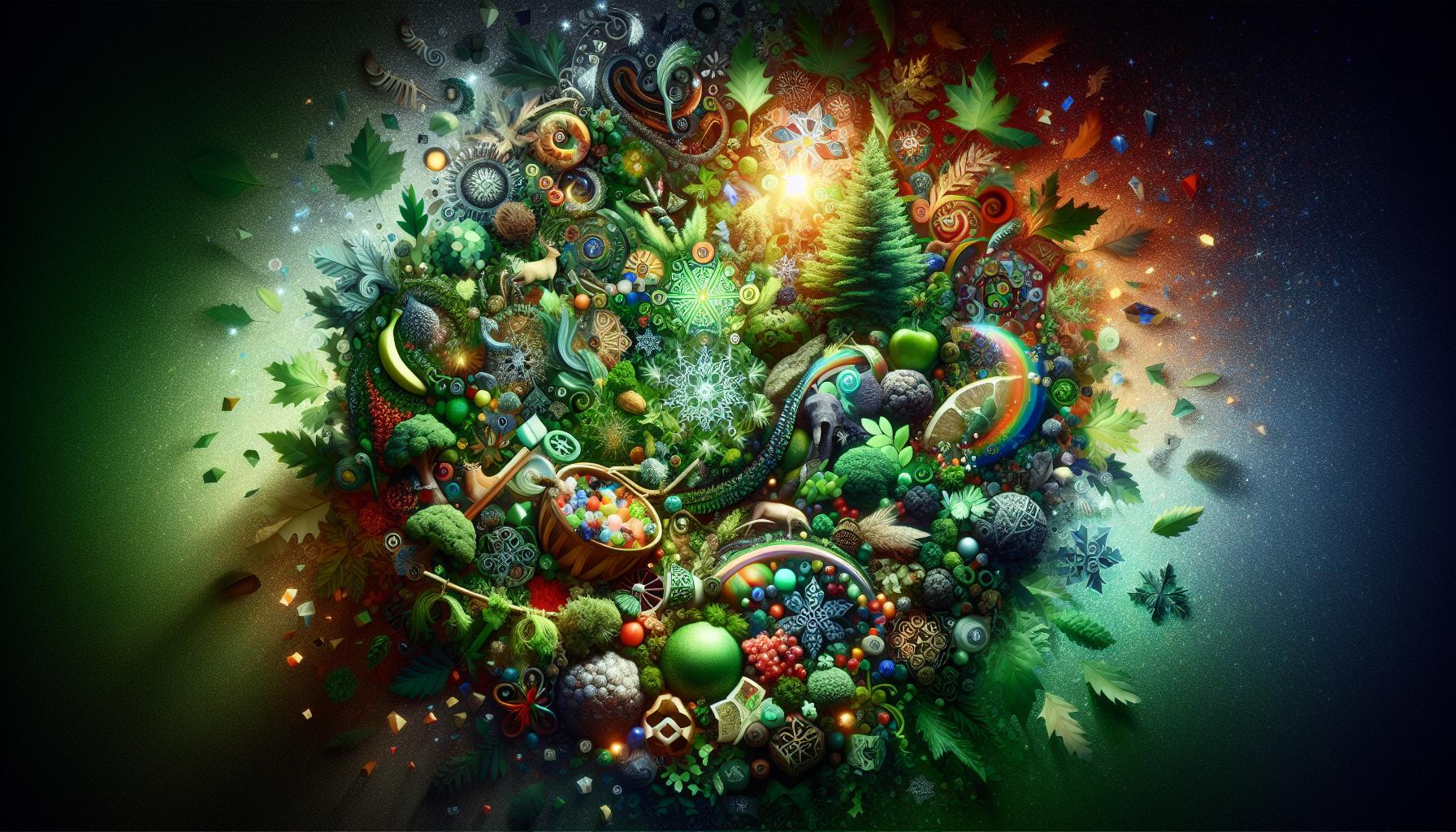
Insights from Local Conservationists: Championing Iceland’s Flora
In the realm of environmental conservation, Iceland stands out as a stunning example of resilience and renewal. With its rugged landscapes and volcanic origins, the island was once largely devoid of tree cover, prompting a concerted effort to restore its natural greenery. Local conservationists are at the forefront of efforts to revive Iceland’s flora, creating a vibrant tapestry of biodiversity that benefits both the ecosystem and the community.
The Role of Local Conservationists
Local conservationists play a crucial role in reforestation initiatives aimed at enhancing Iceland’s flora. They work tirelessly to educate communities about the importance of native trees and the ecosystems they support. Among the species being prioritized in these programs are the hardy birch, native to Iceland, which can withstand the harsh climate and poor soil conditions.
Conservationists often partner with local schools, engaging students in hands-on planting activities. This not only fosters a sense of responsibility and awareness among the younger generation but also contributes to the survival of these reforestation efforts. The following practices are commonly adopted by these passionate individuals:
- Community Mobilization: Organizing planting events that attract volunteers from all walks of life.
- Educational Workshops: Conducting sessions on the importance of trees in carbon sequestration and biodiversity.
- Collaboration with Scientists: Partnering with ecologists to monitor and study the growth of newly planted forests.
Success Stories from the Field
One remarkable project is the work done by the Icelandic Forest Service, which has seen a resurgence of woodlands due to careful planning and intervention. This organization, alongside local conservationists, has established a network of tree nurseries, growing native species for replanting. The initiative has not only contributed to lowering erosion but also enhanced habitats for various wildlife, proving the positive ripple effect of their efforts.
The table below summarizes key facts regarding the ongoing reforestation efforts:
| Initiative | Year Established | Native Species Planted | Acres Reforested |
|---|---|---|---|
| Icelandic Forest Service | 1907 | Birch, Willow, Goat Willow | 2,500+ |
| Landgræðsla Ríkisins (Soil Conservation Service) | 1954 | Scots Pine, Conifers | 4,500+ |
These efforts not only address the question of “Are there trees in Iceland?” but also set the groundwork for a more sustainable future, reinforcing the notion that conservation is a community effort. Each tree planted is a step toward restoring Iceland’s landscapes, making conservationists some of the most crucial champions of the island’s natural heritage.
Icelandic Trees and Their Cultural Significance: Stories of Resilience
From the vast, rugged landscapes of Iceland, one can easily overlook the trees that fight for survival in a seemingly harsh and barren environment. Yet, these resilient plants are more than just flora; they embody a rich tapestry of cultural significance intertwined with the history and heritage of the Icelandic people. The struggle of trees in Iceland can serve as a powerful symbol of resilience, and their reforestation plays a vital role in not only enhancing the landscape but also in promoting sustainability and environmental consciousness.
Historical Perspective
Historically, the deforestation of Iceland began with the arrival of the Norse settlers around the 9th century. Vast areas of forest were cut down for timber and agriculture, which drastically altered the landscape. This transformation has left Iceland with a stark tree coverage of only about 1% of its total land area. Despite these challenges, the spirit of reforestation has blossomed. Community-driven initiatives aim to restore native woodlands, such as the birch forests that once thrived. These projects not only remind us of Iceland’s ecological past but also invoke local lore, where trees like the *hlynur* (Norway Maple) are associated with stories of gods and giants, enriching the cultural heritage.
The Role of Nature in Folklore
In Icelandic folklore, trees hold a significant place, often personified as protectors and guardians of the land. Traditional tales speak of spirits inhabiting the woods, which further intertwine nature with national identity. For instance, the famous Álfheimar myth revolves around the notion that elves dwell in ancient trees. As people partake in reforestation efforts, they are not merely planting trees; they are reviving stories that foster a deeper connection to nature. This connection promotes community engagement and instills a shared responsibility for preserving these narratives through ongoing care for the land.
Practical Steps Towards Reforestation
The future of Icelandic forests lies in collective action, and there are several ways for individuals and organizations to contribute to reforestation efforts. Here are a few recommendations:
- Volunteer with local initiatives: Many organizations are dedicated to restoring forests and educating the community about the importance of trees.
- Plant native species: Engage in planting activities that focus on indigenous trees like *Betula pubescens* (downy birch) which are better adapted to the local climate.
- Participate in educational workshops: Learning about biodiversity and the ecological importance of trees can inspire a deeper commitment to environmental conservation.
By participating in these activities, individuals can not only witness the rebirth of Icelandic forests but also become part of an enduring legacy that champions environmental preservation and cultural recognition in a country where every tree tells a story of resilience.
Practical Tips for Exploring Iceland’s Natural Wonders: Forest Trails and Beyond
Exploring Iceland’s natural wonders is a captivating experience that combines breathtaking landscapes with unique environmental elements. While Iceland might be renowned for its volcanic terrain and stunning coastlines, the nation’s efforts in reforestation invite adventurers to discover a lesser-known aspect of its beauty—forest trails. With only a fraction of Iceland historically covered in trees, the ongoing reforestation initiatives have transformed some areas into lush havens worth exploring.
Choosing the Right Trails
When planning your adventure, it’s essential to identify trails that not only showcase Iceland’s new green spaces but also offer varied experiences. For a scenic hike, consider the trails in Þingvellir National Park, where you can intertwine your appreciation for natural wonders with the slow but steady resurgence of Iceland’s tree populations. Look for designated paths that guide visitors through younger forests, showcasing species like birch, rowan, and even the more exotic sitka spruce, which are part of the reforestation efforts expanding across the country.
- Reforestation Areas: Visit places like the Skorradalur valley, which features restored woodlands that create ideal hiking environments.
- Wildlife Watching: Keep an eye out for the diverse wildlife that inhabits these forested regions, including various bird species and small mammals.
- Seasonal Changes: Each season offers a different perspective; autumn foliage or the fresh greens of spring create stunning backdrops for photographers.
Preparing for Your Adventure
Before heading out, ensure you’re fully prepared to enjoy Iceland’s forests. Here are a few practical tips:
| Tip | Description |
|---|---|
| Dress in Layers | The weather can change rapidly, so wearing layers helps keep you comfortable. |
| Proper Footwear | Sturdy waterproof boots are recommended to navigate both muddy trails and rocky paths. |
| Stay Hydrated | Bring a refillable water bottle; many trails have streams, but ensure they are safe for drinking. |
| Respect Nature | Follow the marked paths and avoid trampling young trees or native flora. |
Engaging with Iceland’s forest trails not only enhances your appreciation for the environment but also supports ongoing reforestation efforts. As you traverse these revitalized spaces, you’ll encounter a blend of natural beauty and ecological commitment, making your exploration both meaningful and memorable. Whether you’re a seasoned hiker or a casual nature lover, these trails offer a unique experience that goes beyond the typical Icelandic landscapes, inviting you to witness the transformation of the land firsthand.
Engaging Families with Nature: Activities for Kids in Icelandic Parks
Exploring the stunning landscapes of Iceland with children can be a transformative experience for the whole family. Biodiverse parks, where the reforestation efforts are evident, create not just a picturesque backdrop, but an immersive learning environment. As families engage with nature, they not only foster a connection to the environment but also take part in Iceland’s ongoing journey toward sustainability. Here are some activities that can make your family adventure in Icelandic parks both enjoyable and educational.
Nature Treasure Hunts
A nature treasure hunt is a fantastic way for kids to explore the unique flora and fauna of Iceland’s parks. Create a list of specific trees and plants—some of which are the results of the country’s significant reforestation initiatives. You might include:
- Birch trees – The most common indigenous tree in Iceland.
- Rowan trees – Recognizable by their bright berries.
- Various mosses and lichens – Vital components of Iceland’s ecosystems.
Children can check items off their list as they learn to identify these species. This activity encourages observation skills and connects them directly to Iceland’s natural beauty.
Nature Sketching and Photography
Encouraging creativity in nature can be incredibly rewarding. Provide your children with sketchbooks or cameras to capture the vibrant landscapes found in parks like Þingvellir National Park or Ásbyrgi Canyon. Set aside time for them to sketch or photograph the growth of trees and other elements of nature. This activity promotes mindfulness and appreciation for the evolving reforestation and diverse ecosystems illustrated in guides about the reforestation in Iceland.
Educational Workshops and Guided Tours
Many parks offer educational workshops where families can engage in hands-on activities. These might include planting new trees, learning about native species, or participating in conservation efforts. Guided tours often lead to intriguing discussions about Iceland’s unique environment, the impact of climate change, and the importance of trees in combating soil erosion.
| Activity | Location | Benefits |
|---|---|---|
| Nature Treasure Hunt | Any park with trails | Enhances observation skills, teamwork |
| Sketching and Photography | Þingvellir National Park | Boosts creativity, promotes mindfulness |
| Workshops and Guided Tours | Borganes Eco Center | Increases environmental awareness, practical involvement |
By embracing these activities in Iceland’s beautiful parks, families can not only enjoy their surroundings but also contribute to the ongoing narrative of reforestation and sustainability that is so crucial in preserving Iceland’s natural heritage. The adventures in nature provide profound lessons that will resonate long after your visit.
The Importance of Biodiversity: How Trees Support Iceland’s Ecosystems
Across the rugged landscapes of Iceland, biodiversity plays a vital role in sustaining life and maintaining ecological balance. Despite Iceland’s reputation as a largely treeless environment, efforts toward reforestation and the cultivation of native species highlight the crucial role trees play in bolstering the island’s ecosystems. Trees are more than mere sentinels of nature; they serve as integral components of biodiversity, providing habitat, stabilizing soil, and contributing to a healthy atmosphere.
The Role of Trees in Ecosystem Functionality
The introduction of trees to Iceland, particularly through initiatives outlined in Are There Trees in Iceland: Reforestation & Nature Guide, has sparked a metamorphosis in local ecosystems. Key functionalities of trees include:
- Habitat Creation: Trees provide a haven for numerous species, from birds to insects, fostering diverse communities that contribute to the overall health of the ecosystem.
- Soil Stabilization: The root systems of trees hold soil together, reducing erosion and facilitating the retention of water, which is critical in volcanic regions.
- Carbon Sequestration: Trees absorb carbon dioxide, helping mitigate climate change impacts—a vital process for Iceland’s fragile environment.
- Microclimate Regulation: Forested areas can create cooler, moister conditions, which support understory plants and varied wildlife.
Enhancing Biodiversity Through Reforestation
In recent years, Iceland’s reforestation efforts have garnered increasing attention due to their potential to bolster biodiversity. Local organizations are actively working to restore native woodland areas, focusing on species like the Betula pubescens (downy birch) and Salix (willow). These initiatives not only aim to plant trees but also to revive ecosystems that can endure climatic changes and provide resilience against invasive species.
| Tree Species | Ecological Benefits | Reforestation Efforts |
|---|---|---|
| Betula pubescens | Supports local fauna & improves soil fertility | Widespread planting in native forests |
| Salix species | Stabilizes riverbanks & improves water quality | Implemented in riparian zones for erosion control |
| Pinus sylvestris | Provides habitat & enhances forest density | Used in specific areas for mixed forests |
As communities engage in reforestation, they not only enhance biodiversity but also create social and economic benefits, such as tourism and eco-friendly industries. By fostering a deeper appreciation for nature, conservation efforts encourage public participation in restoring Iceland’s natural heritage, illustrating the interconnectedness of trees and the rich tapestry of life that they support. Thus, recognizing the value of trees is paramount, not just for the environment, but for the sustainable future of Iceland itself.
Q&A
Are there trees in Iceland?
Yes, there are trees in Iceland, but they are relatively scarce due to the harsh climate and historical deforestation. Currently, the most common trees found include birch, willow, and aspens.
While Iceland was once covered in forests, much of the native woodland was cleared for timber and agriculture. Today, ongoing reforestation efforts aim to restore these areas, featuring initiatives like the Icelandic Forest Service that promotes planting native species. This movement helps enhance biodiversity and combat soil erosion.
What is the current state of reforestation in Iceland?
Reforestation in Iceland is gaining momentum, with various organizations working to plant trees and restore natural habitats. These efforts have seen a significant increase in tree coverage over the last few decades.
Community-driven projects, such as “One Tree Per Child,” aim to encourage participation and educate youth about the importance of forests. The government also supports these initiatives, aiming for a greener future while enhancing the scenic beauty of the landscape. For more on Iceland’s natural initiatives, check out our guide on Iceland’s Nature Guide.
Why does Iceland have limited forest coverage?
Iceland’s limited forest coverage is largely due to its harsh climate, volcanic activity, and significant historical deforestation for land use. These factors have created challenges for tree growth.
The subarctic climate, with strong winds and long winters, makes it difficult for trees to thrive. Additionally, centuries of overgrazing and logging have depleted the forest areas that once flourished here. Nonetheless, renewed efforts in reforestation are encouraging native tree populations to return.
Can I participate in reforestation efforts in Iceland?
Absolutely! Visitors and locals can participate in reforestation efforts through various initiatives and community programs. It’s a wonderful way to connect with nature.
Several organizations, like the Icelandic Forest Service, offer opportunities to volunteer for tree planting events. Joining these initiatives not only supports the environment but also enriches your experience of Iceland’s stunning landscapes, creating lasting memories in the process.
What types of trees are most commonly planted in Iceland?
The most commonly planted trees in Iceland include downy birch, Norway spruce, and rowan. These species are well-suited to the local climate.
Downy birch is particularly valued for its resilience and ability to stabilize soil, making it a primary choice for reforestation projects. Efforts to plant a mix of native and non-invasive species encourage biodiversity and support the re-establishment of balanced ecosystems. Interested in learning more? Explore our detailed sections about Iceland’s unique flora.
How does reforestation affect wildlife in Iceland?
Reforestation in Iceland positively impacts wildlife by creating habitats for various species. Increased tree coverage fosters biodiversity, benefiting both flora and fauna.
With more trees, birds, insects, and small mammals find homes, which helps balance the ecosystem. Enhanced habitats also encourage the return of species that once thrived in the area. This revival of wildlife aligns with Iceland’s commitment to sustainability and ecological preservation.
What role do local communities play in reforestation?
Local communities play a crucial role in reforestation efforts in Iceland by participating in planting events and advocating for sustainable practices.
Community-driven projects engage citizens of all ages, fostering a sense of stewardship for the environment. These initiatives not only enrich local landscapes but also build camaraderie among residents and visitors, creating a collective commitment to preserving Iceland’s natural beauty and environment.
The Way Forward
As we wrap up our exploration of Iceland’s unique relationship with trees, it’s clear that this land of fire and ice has a burgeoning story of reforestation and renewal, waiting to be discovered. Imagine standing amidst the cheerful birches of Þingvellir National Park, where the soft whisper of the wind through the leaves echoes ancient sagas and modern aspirations alike. Picture the vibrant hues of green that stand in stark contrast to the volcanic scenery, a testament to the resilience of nature and the commitment of its people.
Local stories abound, like the proud tales of families who contribute to planting more saplings each year, nurturing the earth while nurturing their own connection to this extraordinary place. It’s in the laughter of children playing in the shade of newly planted forests and the shared moments of locals and travelers alike, pausing to appreciate these efforts.
So whether you’re wandering through Reykjavík’s urban greenspaces or hiking along the rugged fjords, let the spirit of Iceland’s landscapes guide you. Take a moment to converse with the locals about their favorite spots—perhaps Kldadhóll, where swirling tales of nature and community merge, or Skorradalur Valley, with its breathtaking backdrop of freshly planted woodlands.
We invite you to dive deeper into this enchanting dialogue between nature and humanity. Explore reforestation projects, partake in local conservation initiatives, or simply take a moment to relish being amidst the evolving beauty of Iceland’s rare woodlands. Your journey can be as rich and vibrant as the new growth surrounding you. Who knows, you may just plant a seed of your own, sparking a lifetime of adventures and stories to share. The trees of Iceland await your discovery—go forth, explore, and let nature inspire you!




